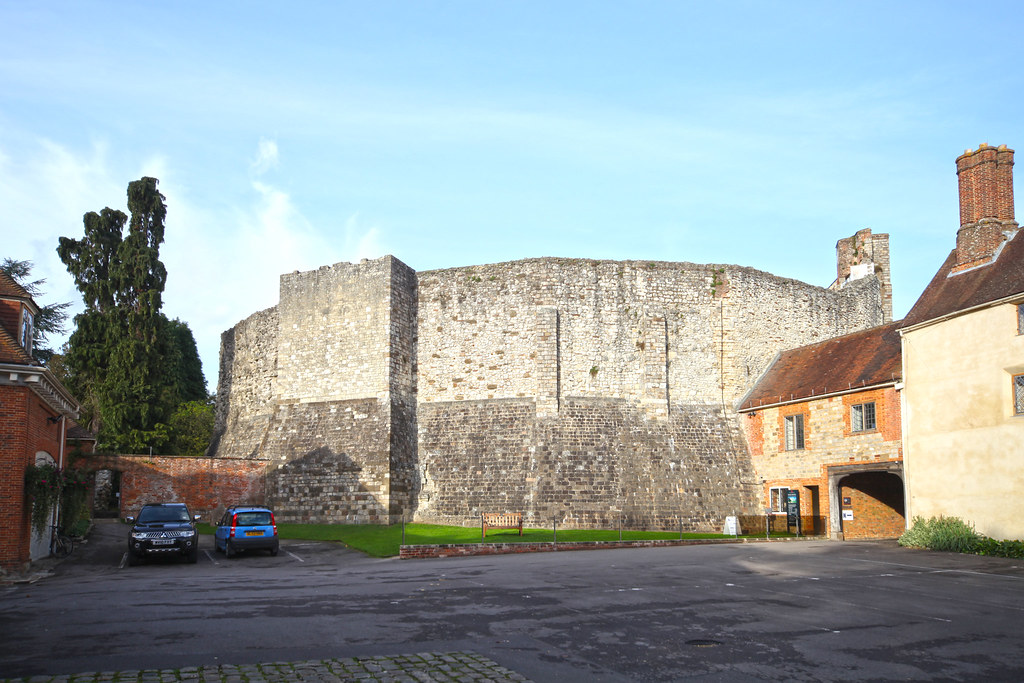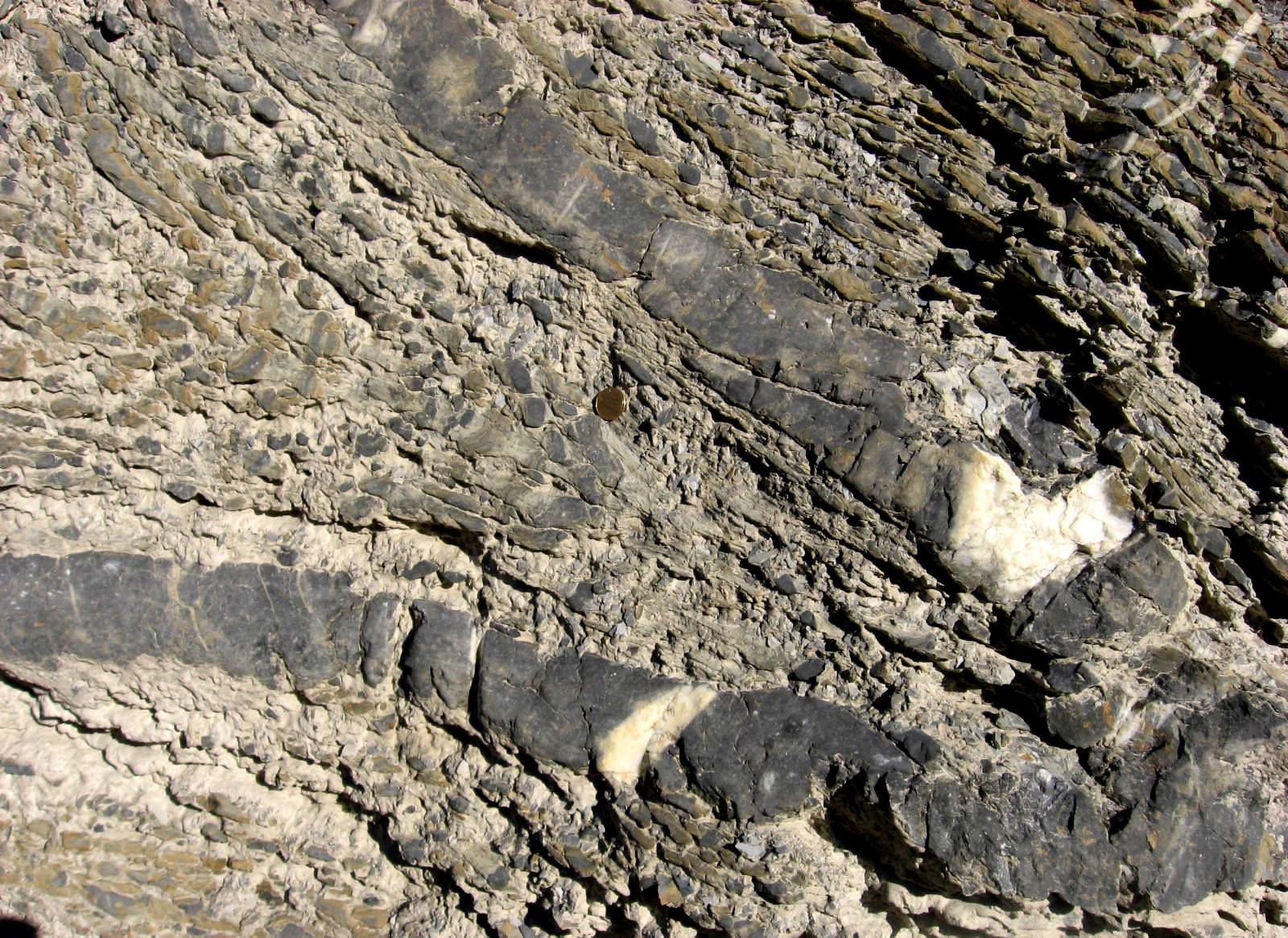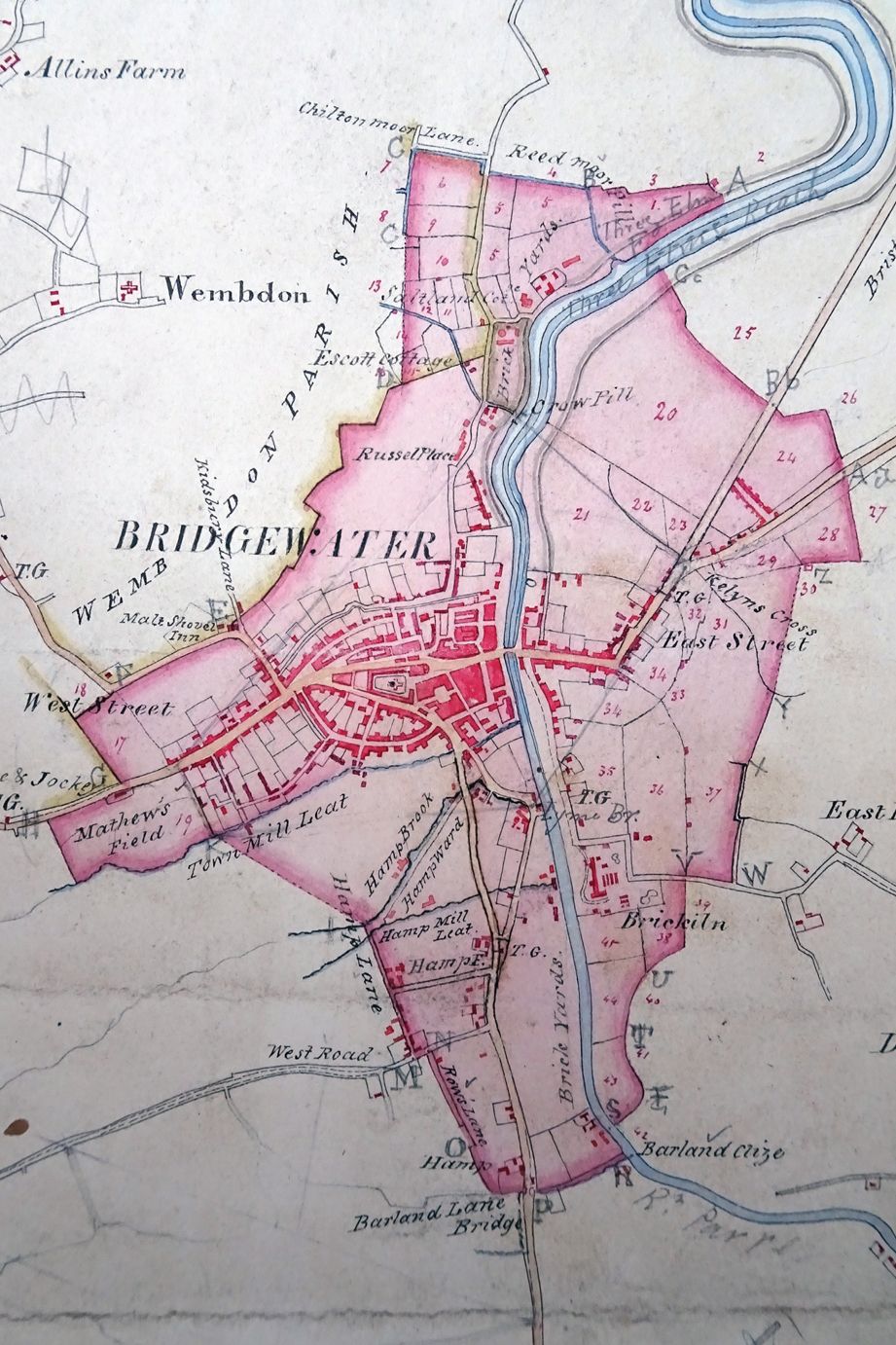
Nestled in the heart of South West England, Devon stands as a county of profound historical resonance and striking geographical diversity. Uniquely positioned on a peninsula, it boasts two distinct coastlines—one facing the Bristol Channel and Celtic Sea to the north, and another embracing the English Channel to the south. This remarkable duality is but one facet of a region rich in natural beauty, ancient heritage, and a complex tapestry of human and geological evolution that has shaped its identity for millennia.
The story of Devon is not merely one of picturesque landscapes and popular holiday destinations; it is a narrative deeply etched in the very bedrock of the land and in the annals of time. From the earliest whispers of human presence to the monumental geological shifts that named an entire era, Devon offers a compelling study of endurance, adaptation, and transformation. Understanding this county requires a journey through its foundational elements, exploring how past events and natural forces conspired to create the distinctive character we observe today.
This initial section embarks on an exploration of Devon’s most ancient layers, delving into the very etymology of its name, tracing the paths of its earliest inhabitants, and examining the significant historical shifts that have marked its social fabric. We will also uncover the extraordinary geological phenomena that not only defined the region but also bestowed upon it a global scientific legacy, illustrating how deeply interwoven are its history and its landscape.

1. **The Ancient Pedigree: Unraveling the Name of Devon**The name “Devon” itself is a profound echo from antiquity, tracing its lineage back to the Brythons who inhabited the southwestern peninsula of Britain during the Roman conquest. These people were known as the Dumnonii, a term thought to mean ‘deep valley dwellers,’ stemming from the Proto-Celtic *dubnos, signifying ‘deep.’ In the Brittonic languages that persist today, such as Welsh, Breton, and Cornish, Devon is known as Dyfnaint, Devnent, and Dewnens respectively, each reinforcing the evocative meaning of ‘deep valleys’ and painting a vivid picture of the region’s undulating topography.
William Camden, in his influential 1607 edition of “Britannia,” provided further insight into this historical nomenclature. He described Devon as an integral part of an older, wider country that once encompassed Cornwall, noting that the inhabitants, the Dumnonii or Damnonii, resided “all over this Countrey… somewhat low and in valleys.” Camden explicitly linked this dwelling pattern to the British tongue, stating that this manner of living was called “Dan-munith,” and that the “Province next adjoyning in like respect is at this day named by the Britans Duffneit, that is to say, Low valleys.” This historical account firmly roots the county’s name in its characteristic geographical features and the language of its earliest known inhabitants.
The suffix “shire,” often associated with the older form “Devonshire,” also possesses deep historical roots, rather than being a later error as some erroneous theories suggest. Anglo-Saxon texts from before 1000 CE make references to both “Defnas,” a name for the “people of Devon,” and “Defenasċīre,” meaning ‘Shire of the Devonians.’ This evidence suggests that the term “Devonshire” may have originated around the 8th century, evolving from the Latin “Dumnonia” to “Defenasċīr,” thereby formalizing the region’s identity as an administrative entity and cementing its place in the unfolding history of England.

2. **Early Human Footprints: From Hunter-Gatherers to Saxon Incursions**The land of Devon bears testament to human occupation stretching back tens of thousands of years, with archaeological discoveries painting a compelling picture of early life. Kents Cavern in Torquay, for instance, has yielded human remains dating back an astonishing 30,000 to 40,000 years, offering a glimpse into some of Britain’s earliest inhabitants. Later, Dartmoor is believed to have been settled by Mesolithic hunter-gatherer peoples from approximately 6000 BC, showcasing a continuous thread of human presence adapting to the varied landscapes of the region. This early history continued through the Roman period, during which the area remained under military occupation for around 350 years, though less Romanised than other parts of Britain due to its remote location.
Following the Roman departure, the area began to experience significant transformations with the advent of Saxon incursions around 600 AD. These began as small bands of settlers, initially along the coasts of Lyme Bay and the southern estuaries, gradually evolving into more organized groups pushing inland from the east. Devon thus became a crucial frontier, a meeting point and often a contested zone, between the Brittonic peoples who had long inhabited the region and the expanding Anglo-Saxon kingdom of Wessex. This dynamic period culminated in Devon being largely absorbed into Wessex by the mid-ninth century, marking a pivotal shift in its cultural and political landscape.
Further complicating this early tapestry of settlement and conflict were sporadic Danish raids that plagued many coastal parts of Devon between approximately 800 AD and the eve of the Norman Conquest. These raids targeted key settlements and resources, leaving their mark on the historical record. Notable incidents include the attack on the silver mint at Hlidaforda (Lydford) in 997 and another on Taintona, a settlement on the Teign estuary, in 1001. Such events underscore the turbulent and often precarious existence faced by the inhabitants of Devon during these formative centuries, as different cultures and powers vied for control and influence over this strategically important southwestern corner of Britain.

3. **A Genetic Tapestry: Devon’s Unique Ancestral Story**Modern scientific inquiry has provided a fascinating new dimension to understanding Devon’s historical narrative, particularly concerning its population’s genetic makeup. A comprehensive genetic study conducted by the University of Oxford and University College London unveiled a striking revelation: the existence of distinct genetic groups within Cornwall and Devon. Crucially, this research identified a clear genetic division that almost precisely follows the modern county boundary, the River Tamar, suggesting a long-standing separation in population movements and intermingling across this geographical line.
Beyond the internal distinctions within the southwestern peninsula, the study also highlighted significant genetic differences between Devon and the rest of Southern England. This finding points towards a unique ancestral heritage for the people of Devon, suggesting that their historical development diverged in notable ways from the broader patterns of migration and settlement seen across much of Britain. The population of Devon, in fact, exhibited intriguing similarities with modern northern France, including Brittany. This genetic kinship with continental populations hints at ancient cross-channel connections that played a role in shaping the local gene pool.
The implications of this genetic evidence are profound, challenging traditional understandings of the Anglo-Saxon migrations. Rather than indicating a mass movement of people that entirely displaced or absorbed the existing Brittonic population, the study suggests that the Anglo-Saxon influence in Devon may have been more limited. This implies a scenario where the indigenous lineage of the Dumnonii persisted, maintaining a significant genetic presence despite the political and cultural shifts brought about by the expanding Anglo-Saxon kingdoms. It underscores a unique and enduring ancestral story, reflecting a distinct population history that sets Devon apart within the British Isles.

4. **Echoes of Conflict: Devon’s Role in English Strife**Devon’s history is frequently marked by its involvement in the civil conflicts that have shaped England, reflecting its strategic importance and the varied allegiances of its people. Since the Norman Conquest, the county has found itself at the heart of numerous uprisings and power struggles, with local communities often bearing the brunt of wider national disagreements. Notable among these were the protracted Wars of the Roses, a series of dynastic civil wars that saw local lords and their retinues drawn into fierce contention for the English throne, though specific events within Devon are less highlighted in the given text, its general involvement is noted.
The county also played a significant role in later political and religious turbulences. Perkin Warbeck’s rising in 1497, a challenge to Henry VII’s reign, found some support and engagement within Devon, illustrating a willingness for local populations to become entangled in challenges to established authority. Similarly, the Prayer Book Rebellion of 1549, a major revolt in response to the introduction of the Book of Common Prayer and the Reformation’s changes to religious practice, saw widespread participation from Devon, highlighting a deeply held conservative religious sentiment among many of its inhabitants. The English Civil War in the 17th century further divided the county, with loyalties split between Royalist and Parliamentarian causes, leading to local skirmishes and sieges that left an indelible mark on the landscape and its people.
Beyond these broader conflicts, Devon also witnessed unique forms of social unrest and political manoeuvring. In the Later Middle Ages, the county was notably home to several anticlerical movements, one particularly colourful example being the Order of Brothelyngham. This fake monastic order, active in 1348, famously rode through Exeter, engaging in the kidnapping of both religious men and laymen, and subsequently extorting money from them as ransom. This peculiar episode reveals a distinctive local character of defiance and unconventional resistance. Furthermore, a pivotal moment in English history, the Glorious Revolution of 1688, began on Devon soil, with the arrival of William of Orange at Brixham, underscoring the county’s recurring role as a stage for events of national significance.

5. **The Riches Below: Devon’s Enduring Mining Heritage**For centuries, Devon has been renowned for its rich mineral deposits, particularly tin and copper, along with other metals, whose extraction dates back to ancient times. This long-standing mining heritage was a cornerstone of the county’s economy and greatly influenced its social structures, drawing generations into the hard graft of extracting wealth from the earth. The importance of these natural resources meant that mining communities developed unique traditions and systems, distinct from the agricultural life that dominated other parts of England.
A remarkable aspect of Devon’s mining history was the substantial degree of independence enjoyed by its tin miners. This autonomy was enshrined in the Devon’s Stannary Convocation, an institution whose origins can be traced back to the 12th century. The Stannary Parliament, as it was sometimes known, granted tin miners special legal and administrative privileges, allowing them to govern many aspects of their industry and local affairs with considerable freedom from central authority. This unique arrangement reflects the economic power and strategic importance of tin production in medieval and early modern Devon.
Although the Stannary Convocation’s influence waned over time with shifts in mining practices and the broader political landscape, its historical significance remains profound. The last recorded sitting of this unique body took place in 1748, marking the end of its active role in self-governance. Nevertheless, the legacy of Devon’s mining heritage continues to resonate, evident in its scarred landscapes, the surviving architectural remnants of engine houses and mines, and the enduring narratives of the resilient communities who once thrived on the riches found deep beneath the county’s surface.

6. **The Devonian Period: A Global Geological Legacy from Local Strata**Devon occupies a singular position in the world of geology, lending its very name to a crucial period in Earth’s deep history: the Devonian period. This extraordinary geological epoch, dating approximately 395 to 359 million years ago, represents a time when significant life forms diversified, particularly fish, earning it the moniker “Age of Fish.” The rocks from this period are the oldest datable strata found in Devon, forming a foundational layer of the county’s geological composition and providing invaluable insights into ancient marine environments.
During the Devonian period, the region now known as Devon lay beneath tropical seas. In these ancient waters, vast quantities of sandstones and shales were deposited across what would become North and South Devon, gradually building up layers of sedimentary rock. In shallower, more sheltered marine conditions, particularly in areas near present-day Torquay and Plymouth, extensive beds of limestone were laid down. These limestones, rich in fossilized marine life, offer tangible evidence of the warm, vibrant ecosystems that once flourished here, contrasting dramatically with the temperate climate of modern Devon.
The global recognition of the Devonian period owes its inception directly to the scientific work conducted in this very county. In the 1840s, prominent geologists Roderick Murchison and Adam Sedgwick studied these distinctive rock formations and, based on their findings, formally designated and named the “Devonian” period. This act bestowed upon Devon the unique distinction of being the only British county whose name is used worldwide as the basis for a geological time period. It stands as a testament to the profound geological significance of its strata, which provided critical evidence for understanding Earth’s ancient past.

7. **Shaping the Land: The Culm Measures and Dartmoor’s Granite Heart**Beyond the globally recognized Devonian strata, Devon is also characterized by its second major rock system: the Culm Measures. This geological formation, originating from the Carboniferous period, is predominantly found in northwest Devon and extends into north Cornwall, forming a distinctive belt stretching from Bideford across the landscape. The term “Culm” itself is thought to derive either from the occasional presence of a soft, sooty coal, known locally as culm, or from the intricate contortions commonly observed within its rock beds, reflecting intense geological pressures over millennia.
The Culm Measures significantly contribute to the visual character of much of Devon, giving rise to a landscape that is notably gentler, greener, and more rounded in its contours compared to the ruggedness found elsewhere. This distinctive topography contrasts sharply with the dramatic coastlines and the imposing moorlands, offering fertile valleys and rolling hills. The formation is also found on the western, northern, and eastern borders of Dartmoor, creating a transition zone between the ancient granite and the surrounding sedimentary plains, influencing the local ecology and agricultural patterns.
At the very heart of Devon, both geographically and geologically, lies the formidable granite intrusion of Dartmoor. This ancient batholith, a large mass of intrusive igneous rock, forms the very ‘spine’ of the southwestern peninsula. Its formation involved molten rock pushing up into the Earth’s crust and cooling slowly, resulting in the hard, resistant granite that defines Dartmoor’s rugged and elevated landscape. This central granite mass stands in stark contrast to the surrounding sedimentary rocks, acting as a major hydrological source for many of the county’s rivers and serving as an iconic, defining geological landmark that profoundly influences Devon’s climate, ecology, and human settlement patterns.

8. **A County of Two Coasts: Devon’s Diverse Physical Geography**Devon, uniquely positioned on a peninsula, holds the remarkable distinction of possessing two separate coastlines—a geographical feature profoundly shaping its character. To the north, its shores meet the Bristol Channel and the Celtic Sea, presenting a rugged, often dramatic face to the Atlantic-influenced waters. In contrast, the southern coastline gracefully embraces the English Channel, offering a milder, more sheltered aspect. This dual coastal identity contributes immensely to the county’s varied beauty and diverse ecosystems.
The entire length of these spectacular coastlines is traced by the South West Coast Path, with approximately 65% designated as Heritage Coast, underscoring its exceptional natural beauty. Inland, Devon unfolds into a captivating mosaic of landscapes. It is renowned for its high moorlands, including the Dartmoor National Park, wholly within its bounds, and a significant portion of the Exmoor National Park, shared with Somerset. Beyond these wild expanses, Devon reveals attractive rolling rural scenery, dotted with tranquil villages and charming thatched cob cottages, making it a popular holiday destination.
Regional variations within Devon are striking. South Devon features rolling hills and picturesque towns like Dartmouth, Ivybridge, Kingsbridge, Salcombe, and Totnes. Along the south coast, Torquay and Paignton serve as principal seaside resorts, drawing visitors with their lively atmosphere. East Devon offers a different allure, home to Exmouth, the county’s first developed seaside resort, and the refined Georgian town of Sidmouth. This eastern stretch also marks the western end of the globally renowned Jurassic Coast World Heritage Site.

9. **The Unfolding Earth: Geological Features Beyond the Core**While Devonian strata, Carboniferous Culm Measures, and Dartmoor’s granite heart form Devon’s foundational geological narrative, younger, equally compelling formations distinctly shape its modern landscape. A significant geological dividing line, broadly aligning with the Bristol to Exeter railway and the M5 motorway, partitions Britain into southeastern lowlands and northwestern uplands. Within Devon, this line helps delineate the varied terrains encountered across the county.
East of this divide, sedimentary rocks include vibrant Permian and Triassic sandstones, responsible for the fertile red soils defining much of East Devon. Further geological curiosities are the Bunter pebble beds near Budleigh Salterton and Woodbury Common, and Jurassic rocks in eastern Devon, contributing to the Jurassic Coast’s world-famous sequence. These layers narrate continuous tales of earth’s history, preserving evidence of ancient environments.
Smaller, yet significant, outcrops of even younger rocks add complexity. These include the striking Cretaceous chalk cliffs at Beer Head, contrasting sharply with typically red cliffs, and gravel deposits on Haldon. Most intriguing are the Eocene and Oligocene ball clay and lignite deposits within the Bovey Basin, formed approximately 50 million years ago under tropical forest conditions. These younger formations highlight the dynamic processes that have sculpted Devon into a visually diverse and scientifically fascinating county.
Read more about: Unflinching Lens: 14 Haunting Images Revealing Climate Change’s Unseen Toll on Our World

10. **A Temperate Embrace: Devon’s Distinctive Climatic Patterns**Devon benefits from a cool oceanic climate, largely influenced by the North Atlantic Drift, which moderates temperatures and shapes its unique weather. This maritime effect ensures generally mild winters, with snow uncommon away from the higher elevations of Dartmoor and Exmoor. Average daily maximum temperatures in January hover around 8 °C (46 °F), making it one of the mildest winter regions globally for its latitude.
Summers in Devon are typically mild, interspersed with welcome warm spells and periods of refreshing cool, rainy weather that keep the landscape verdant. Rainfall distribution varies remarkably across the county. Dartmoor, elevated and exposed, can receive over 2,000 mm (79 in) annually, fostering characteristic moorland bogs. In contrast, areas within the rain shadow along the southeastern coast and around Exeter receive approximately 750 mm (30 in), creating drier, sunnier microclimates.
Sunshine amounts also vary considerably, reflecting topography and prevailing weather. While the expansive moors are often cloudy, receiving less than 1,400 hours annually, the sheltered southeastern coast, particularly around Brixham and Berry Head, basks in over 1,800 hours. This ranks it among the sunniest UK areas. Westerly or south-westerly winds with high pressure can create a Foehn wind effect around Torbay and Teignmouth, leading to prolonged warm, sunny spells.

11. **A Haven for Biodiversity: Devon’s Rich Ecological Systems**Devon’s diverse habitats support an extraordinarily wide range of wildlife, making it an ecological treasure. From coastlines and moorlands to woodlands and river valleys, each environment hosts unique flora and fauna. This rich biodiversity is a source of immense pride, inspiring enthusiasts to aim for spotting over 100 bird species in a single day, a testament to its abundant avian life.
The county’s commitment to protecting this natural heritage is strong, supported by several dedicated wildlife charities. The Devon Wildlife Trust manages 40 nature reserves, acting as vital sanctuaries. The Devon Bird Watching and Preservation Society, often known as “Devon Birds,” founded in 1928, steadfastly studies and conserves wild birds.
National organizations also safeguard Devon’s ecological assets. The Royal Society for the Protection of Birds (RSPB) maintains important reserves, offering safe havens for threatened bird populations. Natural England oversees over 200 Devon Sites of Special Scientific Interest (SSSIs) and National Nature Reserves, including Slapton Ley. The Devon Bat Group, established in 1984, works tirelessly to conserve bat populations, highlighting the broad spectrum of species receiving dedicated attention.

12. **Spotlight on the Rare: Unique Flora and Fauna of Devon**Beyond general abundance, Devon serves as a critical national hotspot for several species uncommon elsewhere in Britain. Among these rarities are the cirl bunting, the greater horseshoe bat, Bechstein’s bat, and the beautiful Jersey tiger moth. Their presence underscores Devon’s role as a stronghold for declining wildlife.
The county also boasts botanical wonders, with species found nowhere else in mainland Britain outside of Cornwall. The sand crocus (Romulea columnae), a delicate flower, graces the dunes of Dawlish Warren, a rare botanical gem. Devon proudly hosts all six British native land reptile species, a testament to its varied habitats and successful reintroduction programs.
Recent conservation initiatives highlight Devon’s pioneering spirit. The Eurasian beaver, once extinct in Britain, has seen a successful reintroduction along the River Otter, contributing to wetland creation. Other rare aquatic species include delicate seahorses and the sea daffodil. Looking ahead, January 2024 plans aim to plant over 100,000 trees in northern Devon, creating 50 hectares of new Celtic rainforest. This National Trust-led project, with community involvement, will include the rare Devon whitebeam, bolstering these at-risk ecosystems. Moreover, rising temperatures have allowed Devon to become the first place in modern Britain to cultivate olives commercially, an unusual development reflecting environmental shifts.

13. **Governing the Green Heart: Devon’s Modern Administrative Structure**Devon’s governance combines historical tradition with contemporary administrative efficiency, managing its diverse urban and rural landscapes. Exeter, the historic city, serves as the administrative centre and capital of the county, embodying centuries of civic life. However, Devon’s administrative map is distinct due to two unitary authorities operating independently of the main county council.
Plymouth, the largest city in Devon, functions as one such unitary authority, gaining administrative independence in 1998. This historic port city manages its own local government, allowing tailored decision-making reflecting its urban character. Similarly, the bustling Torbay conurbation, encompassing Torquay, Paignton, and Brixham, also became a unitary authority in 1998. This acknowledges Torbay’s distinct economic and social profile as a thriving tourist hub.
The remainder of Devon, a non-metropolitan county divided into eight districts, is administered by Devon County Council. This council is responsible for a wide range of services, from education and social care to transport and environmental planning. This layered structure allows for both centralized oversight and localized decision-making, addressing the varied needs of Devon’s diverse communities.

14. **The Fabric of Governance: Political Landscape and Inter-County Collaboration**Devon’s political landscape, reflected in its local government, shows a dynamic interplay of party allegiances and collaborative efforts. The Devon County Council is currently controlled by the Conservatives, with a composition of 38 Conservative councillors, alongside 10 Liberal Democrats, six Labour members, three Independents, two Green Party councillors, and one from the South Devon Alliance. This mix ensures robust debate and broad representation.
At the national parliamentary level, the 2024 general election saw Devon elect a varied contingent: six Liberal Democrats, four Conservatives, and three Labour MPs. This underscores the county’s political heterogeneity and engagement with national currents. Historically, for administrative purposes, Devon was divided into 32 hundreds, like Axminster and Braunton, a localized governance framework pre-dating modern council structures.
In a forward-looking move, Devon County Council and Torbay Council are constituent members of the Devon and Torbay Combined County Authority. This innovative body has devolved powers over transport, housing, skills development, and business support. Comprising 12 members, including six constituent, four non-constituent (representing district councils and police/crime commissioner), and two associate members, it fosters inter-county collaboration and streamlines regional development.



